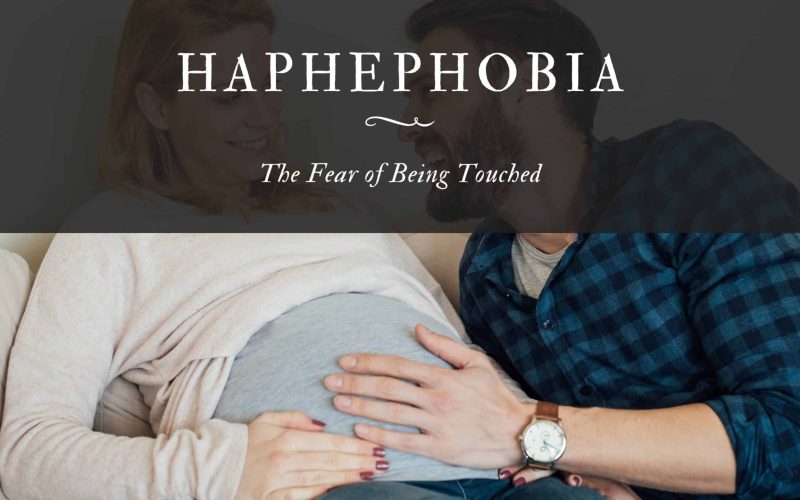People with haphephobia or Aphenphosmphobia have a deep fear of being touched. With Aphenphosmphobia, human contact or touch can be overpowering, weakening, and even painful.
In some cases of haphephobia, the fear of touch is specific to one gender alone, while in other cases, the fear of touch relates to all people.
Other names for Haphephobia are thixophobia, Aphenphosmphobia, or aphephobia.
Symptoms of Haphephobia
Haphephobia is more profound than merely cringing inward whenever someone you don’t like gives you an unwanted hug or whenever your privacy or personal space is invaded on the subway.
Instead, it’s an often paralyzing feeling of fear that can hurt your everyday life if left untreated.
This feeling of paralysis and intense fright is what separates a person who is only uncomfortable with being touched from someone who has a genuine phobia.
In the case of Aphenphosmphobia or haphephobia, there are often physical reactions to touch from a person that may include:
- Hives
- Panic attacks
- Fainting
- Heart palpitations
- Nausea
- Hyperventilation
In a few cases, the fear has been reported to become so intense that a person develops agoraphobia.
Just in case you don’t know what agoraphobia is, it is an anxiety disorder characterized by a person avoiding situations and places that make them anxious.
In the case of people dealing with haphephobia, they may deliberately avoid situations and places that could lead to them being touched.
Diagnosis of Haphephobia
Haphephobia is much like other specific phobias, though it is among those considered rarer.
According to data from the National Institute of Mental Health, well over 10 million adults have one form of phobia or another.
There is no data to show precisely how many people have haphephobia.
- Haphephobia, just like many other phobias, is diagnosed with the exact criteria outlined by the new edition of the Diagnostic and Statistical Manual of Mental Disorders for the diagnosis of any specific phobia. For a person to be diagnosed with a particular phobia, the following criteria must be met:
- The person shows an irrational or excessive fear of the situation ( which is human touch in this case).
- Exposure to the feared situation causes an instant panic attack or anxiety response.
- The person with the phobia knows that the fear he or she feels is excessive and irrational.
- The situation that causes fear is actively avoided whenever possible.
- Avoidance or the feeling of anxiety interferes with the person’s daily life and ability to function normally.
What Causes Haphephobia?
There isn’t one specific. Cause that is known to be responsible for haphephobia. Some researchers believe that most people who have it were born with it or that a change in brain function partly causes it.
Others think that past traumatic experiences cause it. However, this phobia may be more likely to show up in those people who have had sexual assault experiences or dealt with another trauma.
How to Cope With Haphephobia?
Just like with other phobias, There’s no specific “cure” for haphephobia. However, there are treatment options that may be helpful when it comes to managing the condition.
Exposure Therapy
Exposure therapy is a form of treatment that involves slowly being exposed to the situation that causes fear — in this case, touch.
With the help of a trained therapist, patients can create a safe environment where they can slowly allow themselves to become more comfortable with the things they fear.
Repeated positive experiences via exposure may gradually change a person’s negative emotions toward touch.
Medications
Bruce Cameron, a is a famous licensed counselor in Dallas, Texas and specializes in treating people with haphephobia, says that those with haphephobia often also suffer anxiety or depression.
To address those overlying conditions with medications like antidepressants or benzodiazepines used for anxiety may sometimes be helpful.
Behavioral Therapies
Cognitive-behavioral therapy, which includes hypnosis or dialectical behavioral therapy, can sometimes assist people in gaining control over their fears and phobias.
When Should You Seek Help?
Some specific phobias can be easily self-managed. However, if fear of touch is what you deal with and it interferes with your family, work, or personal life, then now is the time to seek help.
The fact about getting treated for this phone is that the earlier treatment starts, the faster and easier it is.
With proper care and treatment, most people who have haphephobia can go back to leading full, healthy lives.
We hope that you found this article helpful. Please leave a comment below.








